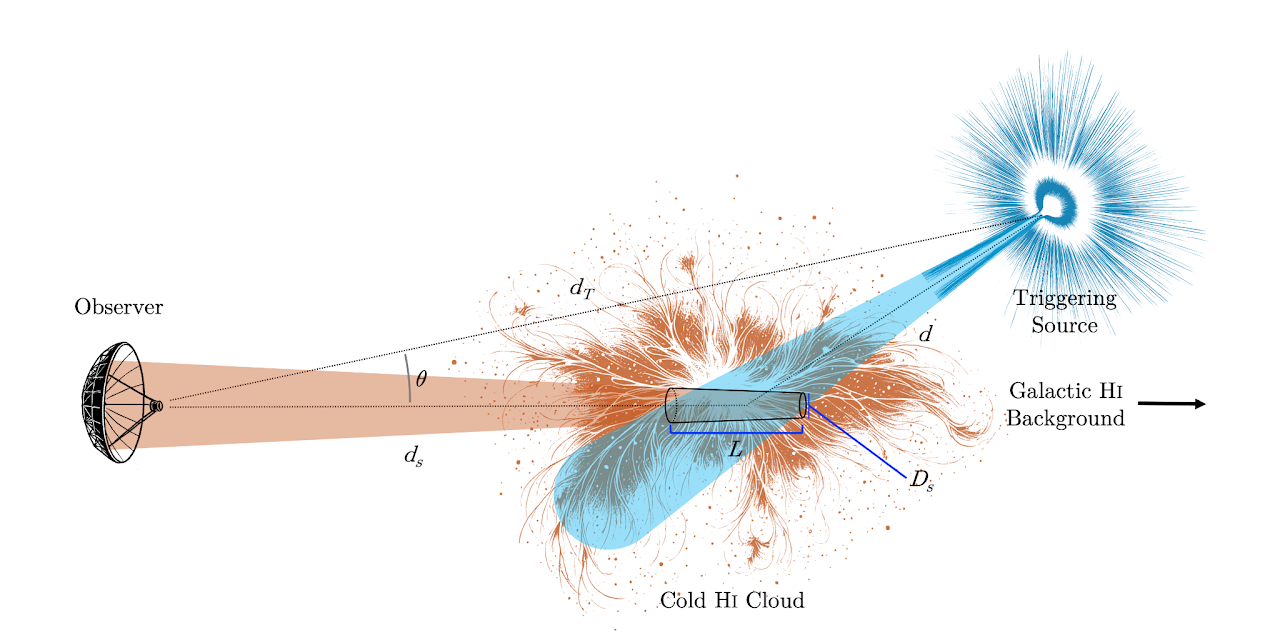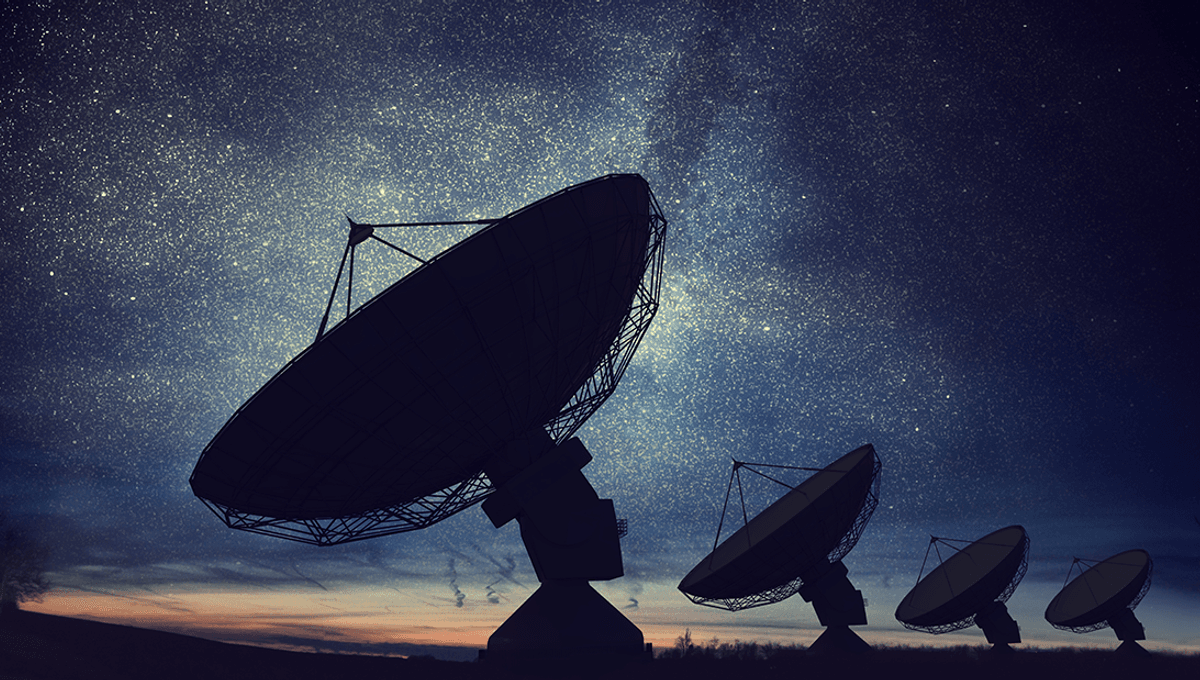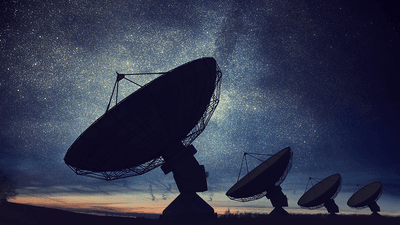A new study has re-examined the famous "Wow!" signal, finding that it likely has an extraterrestrial origin after all, and may have been even more intense than previously believed.
The rest of this article is behind a paywall. Please sign in or subscribe to access the full content. On August 15, 1977, at the Big Ear radio telescope observatory at Ohio State University, a narrowband radio signal was received. A few days later, astronomer Jerry Ehman reviewed the data and noticed the signal sequence, which lasted for a full 72 seconds. In the margin next to the printout, he simply wrote "Wow!", and thus the puzzling signal had a name that would stick for the next 43 years at least. The signal has, so far, defied explanation, and that's not for a lack of trying. Researchers argued the case for it being a comet passing through the area Big Ear was listening to, only for that to be completely refuted about two days later by the team that detected the Wow! signal in the first place, as a comet would have produced a diffuse signal given the large area they cover, rather than the abruptly cut-off signal that was received. The signal has been a source of speculation in the "aliens are out there" community, and not without reason. No other signal like it has been detected before or since. It was in a range of frequencies close to the hydrogen line, which is relatively free from background noise, making it a good range to pick were we to try and communicate with other civilizations ourselves. On top of that, the team themselves believed it to be a good candidate for extraterrestrial life. "The 'Wow!' signal is highly suggestive of extraterrestrial intelligent origin," Ohio State University Radio Observatory director John Kraus wrote in a letter to Carl Sagan in 1994, "but little more can be said until it returns for further study." Since then, the signal has been the subject of many studies, but it has never returned. In a new attempt to narrow down what it might be, a team of scientists re-analyzed decades of data from the Big Ear telescope using modern signal analysis techniques, as well as analyzing data which had previously been unpublished, producing two not as yet peer-reviewed papers on the topic. First up, the team found that the signal was very unlikely to have been the result of interference in the telescope itself, or of terrestrial origin. The team found strong statistical evidence that the signal was not the result of radio frequency interference (RFI). "If this RFI is persistent, it would take approximately six millennia of uninterrupted observations to achieve a signal analogous to the Wow! Signal from random RFI occurrences," the team explains in paper II. Looking at other possible sources, including satellites, the team found this to be unlikely as well. Most satellites of the time were not in the area of the sky identified by the team, orbiting on different planes. While the team suggested that satellites which have slowly come out of orbit could be a source, or a Soviet satellite occupying this orbit, they believe this is unlikely too. This is because they would spend only a few fractions of a second in front of the telescope, rather than the 72 seconds necessary to replicate the Wow! signal. "A continuous signal from an orbiting satellite will need to be at an orbit beyond the Moon to reproduce the pattern," they added. So, what is it? While the team don't yet have an answer, they have made a lot of progress, for instance finding that the signal was much more powerful than had previously been predicted at 250 Janskys, four times larger than had previously been estimated. “Our results don’t solve the mystery of the Wow! Signal,” lead author Professor Abel Méndez of the Planetary Habitability Laboratory at the University of Puerto Rico at Arecibo, explained in a statement. “But they give us the clearest picture yet of what it was and where it came from. This new precision allows us to target future observations more effectively than ever before.” The main clue identified by the team from the "Aricebo Wow" project were two similar signals in 1977 and 1978 (dubbed Wow2 and Wow3) which showed similar characteristics to the original "Wow!" signal, though far less intense. The team believes that the original team studying the Wow! signal were intrigued by these signals as well, looking at their own notes. "It is clear that the Ohio SETI team were interested in these signals, as evidenced by their circling. We believe that they recognized these signals as compact cold Hi clouds, after corroborating their appearance in multiple scans," the team write in paper II. "We searched for the coordinates of these signals in the HI4PI survey and confirmed their association with compact Hi clouds." For the team, this suggests that the Wow! signal could have a common origin in these cold clouds of hydrogen in the interstellar medium (ISM). In paper I from the Aricebo Wow project, they go further and suggest a possible cause of the signal. "We postulate that the Wow! Signal was a superradiance event that produced a maser-like flare from a small cold Hi cloud," the team writes in their study. "We observed from the Arecibo Observatory narrowband signals (∆ν ≤ 10 kHz) similar to the Wow! Signal near the hydrogen line, though significantly weaker. These signals are attributed to small cold Hi cloud regions within the galactic ISM. We propose that the Wow! Signal was caused by the abrupt brightening of the hydrogen line of these clouds triggered by an intense radiation source, such as a magnetar flare or a soft gamma repeater," they add. One hypothesis for the cause of the signal. Image credit: PHL @ UPR Aricebo (Méndez et al., 2024), CC BY 4.0 Though this is an intriguing possibility – and magnetars are often suspected for producing weird signals – the team cannot rule out other potential causes in the cosmos. The team hopes that the work could help better inform the search for extraterrestrial intelligence. "Our study did not conclude that the Wow! Signal constituted evidence of a signal emanating from an extraterrestrial civilization. However, null results are instrumental in refining future technosignature searches," the team concludes. "NASA and other agencies remain committed to their search for biosignatures within the atmospheres of potentially habitable exoplanets." The project will continue to search archives of this and other observatories for other unexplained signals and transients, as well as digitizing and archiving data from the Big Ear project. More work will be done on attempting to analyze the Wow! signal, and hopefully explain its cause. “This study doesn’t close the case,” Méndez added. “It reopens it, but now with a much sharper map in hand.” The studies are posted to preprint server arXiv and have not yet been peer reviewed:





